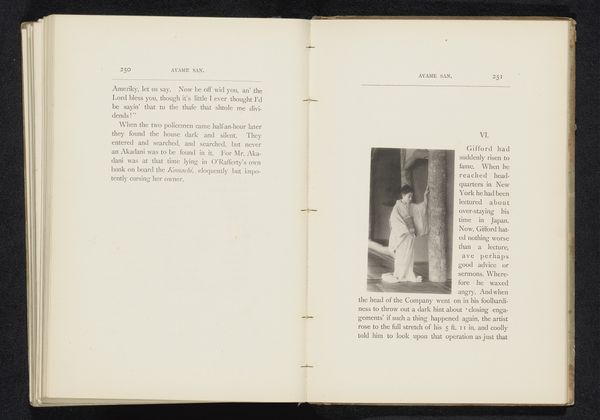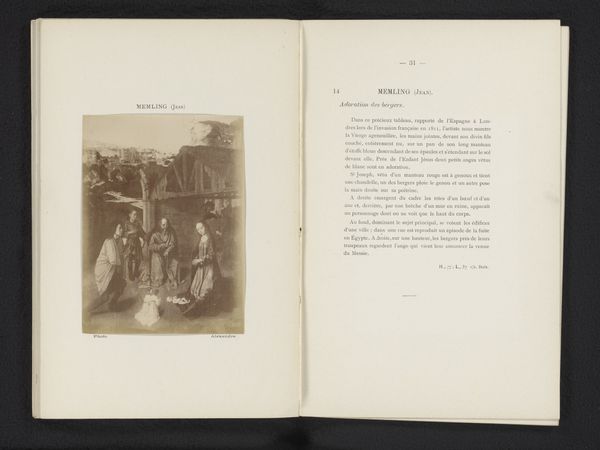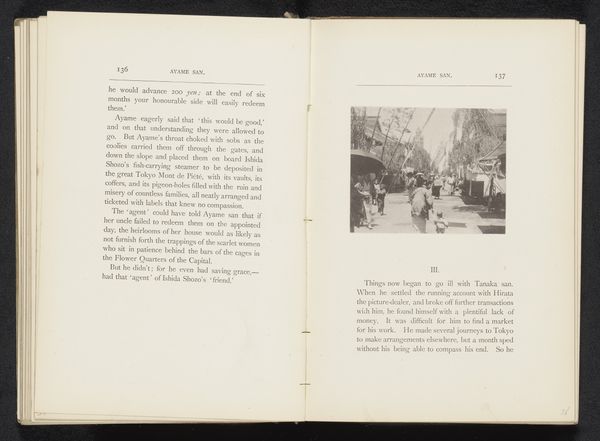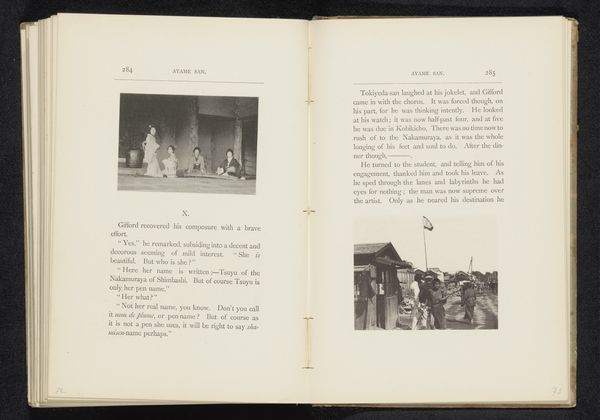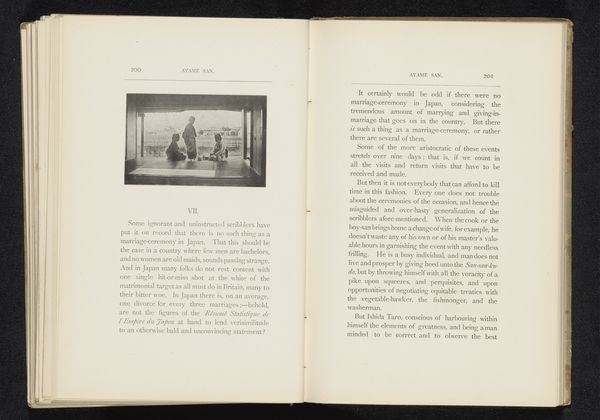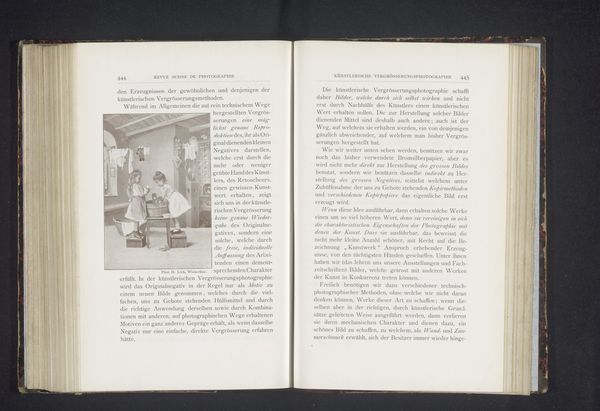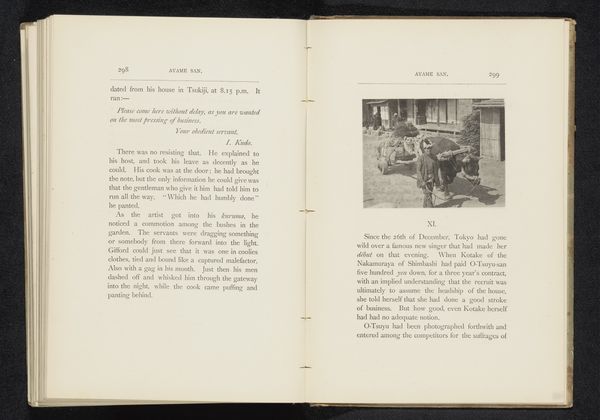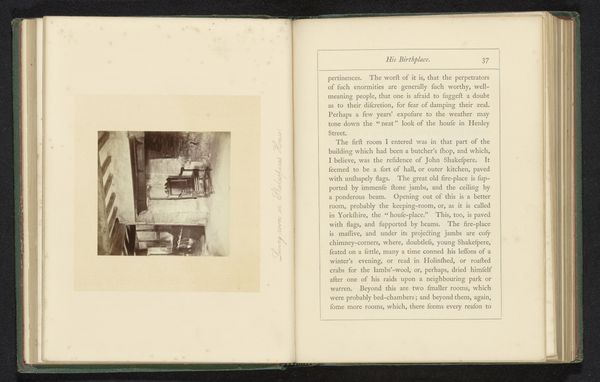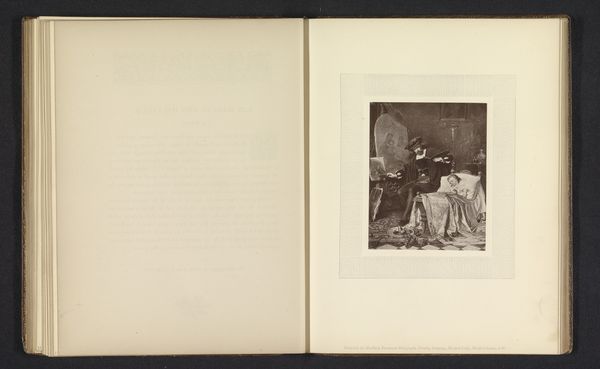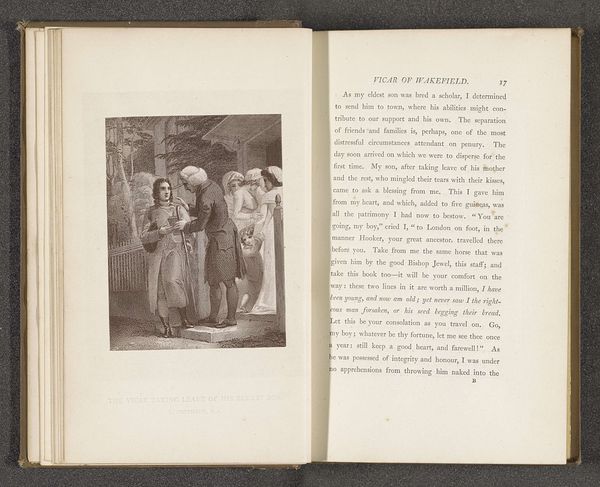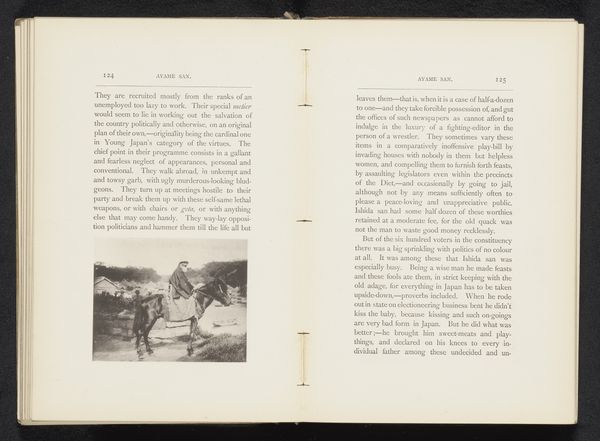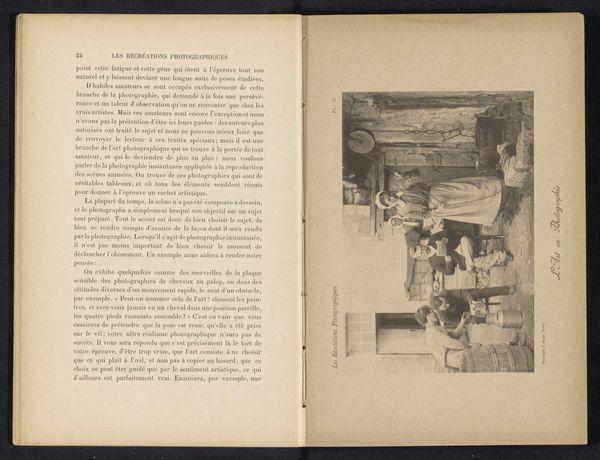
print, photography
#
portrait
# print
#
book
#
photography
#
genre-painting
Dimensions: height 49 mm, width 79 mm
Copyright: Rijks Museum: Open Domain
Curator: Let's turn our attention to this fascinating page. The print is a photographic illustration extracted from a book before 1892, titled "Lezende vrouw in een interieur" attributed to William Kinnimond Burton. Editor: Immediately, I’m struck by how this printed page feels almost intimate. The composition with the blurry contrast gives it a kind of quiet simplicity. Curator: Yes, the print quality does lend itself to a mood, doesn't it? Think about how this book functioned, too – these illustrations gave access to worlds, a global viewpoint circulated via printed material. How are class dynamics involved in the means and costs of image distribution during this time? Editor: The balance achieved through asymmetry captivates me. The way the unknown photographer placed the book in the subject's hands is very well done, particularly when juxtaposed against the blur which is really intriguing for that time period. Curator: It brings forward the theme of genre-painting as you said: a window into the world through commercial printed material that helped the colonial agenda move forward into every social stratum. I wonder about the context of readership, how this image served certain colonial audiences' needs and wants regarding portraying “foreign cultures”. Editor: I understand. Focusing on the subject here, this intimate, indoor setting highlights the importance of contemplation through a study, if that makes sense. Curator: Absolutely, it suggests this idea and it shows how Burton’s images reflect both colonial observation and this desire for documentation from different communities across geographical constraints by circulating images printed and bounded to exotic literature for leisure. The medium becomes central to the message about how these cultural differences come together for specific historical needs and aspirations related primarily within colonial narratives. Editor: Reflecting on these points, what resonates with me the most is the quiet balance – and yet we realize the piece isn’t merely about aesthetics, but this dynamic between representation of labor forces involved and their communities to fulfill cultural imperial desires that circulated widely as material objects ready for mass production.
Comments
No comments
Be the first to comment and join the conversation on the ultimate creative platform.
